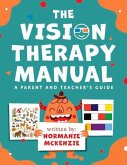Donna Walker Tileston
What Every Parent Should Know About Schools, Standards, and High Stakes Tests
19,99 €
inkl. MwSt.
Versandfertig in 1-2 Wochen

10 °P sammeln
Donna Walker Tileston
What Every Parent Should Know About Schools, Standards, and High Stakes Tests
- Broschiertes Buch
- Merkliste
- Auf die Merkliste
- Bewerten Bewerten
- Teilen
- Produkt teilen
- Produkterinnerung
- Produkterinnerung
Help parents understand educational standards, mandated tests, No Child Left Behind, and other issues affecting their children's schools with this reader-friendly guide.
Andere Kunden interessierten sich auch für
![The Difficult Parent The Difficult Parent]() Charles M. Jaksec IIIThe Difficult Parent35,99 €
Charles M. Jaksec IIIThe Difficult Parent35,99 €![Building Parent Involvement Through the Arts Building Parent Involvement Through the Arts]() Michael SikesBuilding Parent Involvement Through the Arts42,99 €
Michael SikesBuilding Parent Involvement Through the Arts42,99 €![Powerful Parent Letters for K-3 Powerful Parent Letters for K-3]() Mary Anne DugganPowerful Parent Letters for K-342,99 €
Mary Anne DugganPowerful Parent Letters for K-342,99 €![The Vision Therapy Manual: A Parent and Teacher's Guide The Vision Therapy Manual: A Parent and Teacher's Guide]() Normanie McKenzieThe Vision Therapy Manual: A Parent and Teacher's Guide65,99 €
Normanie McKenzieThe Vision Therapy Manual: A Parent and Teacher's Guide65,99 €![The Signing Family: What Every Parent Should Know about Sign Communication The Signing Family: What Every Parent Should Know about Sign Communication]() David StewartThe Signing Family: What Every Parent Should Know about Sign Communication27,99 €
David StewartThe Signing Family: What Every Parent Should Know about Sign Communication27,99 €![From ABC to ADHD: What Every Parent Should Know About Dyslexia and Attention Problems From ABC to ADHD: What Every Parent Should Know About Dyslexia and Attention Problems]() Eric Q. TridasFrom ABC to ADHD: What Every Parent Should Know About Dyslexia and Attention Problems39,99 €
Eric Q. TridasFrom ABC to ADHD: What Every Parent Should Know About Dyslexia and Attention Problems39,99 €![What Successful Schools Do to Involve Families What Successful Schools Do to Involve Families]() Neal A. GlasgowWhat Successful Schools Do to Involve Families42,99 €
Neal A. GlasgowWhat Successful Schools Do to Involve Families42,99 €-
-
-
Help parents understand educational standards, mandated tests, No Child Left Behind, and other issues affecting their children's schools with this reader-friendly guide.
Hinweis: Dieser Artikel kann nur an eine deutsche Lieferadresse ausgeliefert werden.
Hinweis: Dieser Artikel kann nur an eine deutsche Lieferadresse ausgeliefert werden.
Produktdetails
- Produktdetails
- Verlag: Corwin
- Seitenzahl: 88
- Erscheinungstermin: 13. Oktober 2005
- Englisch
- Abmessung: 229mm x 152mm x 5mm
- Gewicht: 142g
- ISBN-13: 9781412914703
- ISBN-10: 1412914701
- Artikelnr.: 21552586
- Herstellerkennzeichnung
- Libri GmbH
- Europaallee 1
- 36244 Bad Hersfeld
- gpsr@libri.de
- Verlag: Corwin
- Seitenzahl: 88
- Erscheinungstermin: 13. Oktober 2005
- Englisch
- Abmessung: 229mm x 152mm x 5mm
- Gewicht: 142g
- ISBN-13: 9781412914703
- ISBN-10: 1412914701
- Artikelnr.: 21552586
- Herstellerkennzeichnung
- Libri GmbH
- Europaallee 1
- 36244 Bad Hersfeld
- gpsr@libri.de
Donna Walker Tileston is a veteran teacher and administrator. She is currently the president of Strategic Teaching and Learning, a consulting firm that provides services to schools throughout the United States and worldwide. Donna's publications include Ten Best Teaching Practices: How Brain Research, Learning Styles, and Standards Define Teaching Competencies (2000), which has been on Corwin¿s bestseller list since its first year in print, in addition to the ten-volume award-winning series What Every Teacher Should Know, now in its second edition. Other recent titles are Teaching Strategies for Active Learning (2006), Teaching Strategies that Prepare Students for High Stakes Tests (2008), and Closing the Poverty and Culture Gap (2009). Donna received her BA from the University of North Texas, her MA from East Texas State University, and her EdD from Texas A & M University-Commerce. She may be reached at www.whateveryteachershouldknow.com
Preface
Acknowledgments
About the Author
Chapter One: Whose Standards?
The History Behind School Standards
No Child Left Behind
How To Access The Standards For Your Child's School
National Standards
Chapter Two: Why Standards Are Important to Education
How Standards Help Produce Alignment That Leads to Equity
Alignment in the Classroom
Standards as a Measuring Rod for Schools
Why Adequate Yearly Progress Matters
What To Do If Adequate Yearly Progress Is Not Being Achieved
Why Alignment Is Important
The Reality of Alignment
Five Things Parents Can Do
Chapter Three: Standards and Alignment
The Format Of Standards and Benchmarks
How Standards Are Used as a Guide for What Teachers Teach
Why The Instructional Practice Is Important to Student Success
How Standards Are Used as a Guide for What Teachers Assess
What Does The Research Say is the Best Way to Teach Vocabulary?
What Processes Will Students Need To Know?
Chapter Four: Asking the Right Questions
What are the Standards and Benchmarks for My State's Schools?
How do I Know That My Child's School is Teaching to the State Standards?
What Do I Need to Know About the High Stakes Test Given in My State?
What Information Do I Need at the Local School Level?
What Other Information is Important to Examine on the School's State Report
Card?
How Can I be Sure That My Child's School Keeps Current With Quality
Research on Learning?
What Questions Should I Ask When Adequate Yearly Progress Is Not Being
Achieved?
What Can We Do To Improve the Education System?
Where Can I Go For More Information?
What If?
Chapter Five: Helping Your Child Master High Stakes Tests
Know the Vocabulary
Practice Compare and Contrast
Pay Attention to Your Child's Stress Levels
Glossary
References
Index
Acknowledgments
About the Author
Chapter One: Whose Standards?
The History Behind School Standards
No Child Left Behind
How To Access The Standards For Your Child's School
National Standards
Chapter Two: Why Standards Are Important to Education
How Standards Help Produce Alignment That Leads to Equity
Alignment in the Classroom
Standards as a Measuring Rod for Schools
Why Adequate Yearly Progress Matters
What To Do If Adequate Yearly Progress Is Not Being Achieved
Why Alignment Is Important
The Reality of Alignment
Five Things Parents Can Do
Chapter Three: Standards and Alignment
The Format Of Standards and Benchmarks
How Standards Are Used as a Guide for What Teachers Teach
Why The Instructional Practice Is Important to Student Success
How Standards Are Used as a Guide for What Teachers Assess
What Does The Research Say is the Best Way to Teach Vocabulary?
What Processes Will Students Need To Know?
Chapter Four: Asking the Right Questions
What are the Standards and Benchmarks for My State's Schools?
How do I Know That My Child's School is Teaching to the State Standards?
What Do I Need to Know About the High Stakes Test Given in My State?
What Information Do I Need at the Local School Level?
What Other Information is Important to Examine on the School's State Report
Card?
How Can I be Sure That My Child's School Keeps Current With Quality
Research on Learning?
What Questions Should I Ask When Adequate Yearly Progress Is Not Being
Achieved?
What Can We Do To Improve the Education System?
Where Can I Go For More Information?
What If?
Chapter Five: Helping Your Child Master High Stakes Tests
Know the Vocabulary
Practice Compare and Contrast
Pay Attention to Your Child's Stress Levels
Glossary
References
Index
Preface
Acknowledgments
About the Author
Chapter One: Whose Standards?
The History Behind School Standards
No Child Left Behind
How To Access The Standards For Your Child's School
National Standards
Chapter Two: Why Standards Are Important to Education
How Standards Help Produce Alignment That Leads to Equity
Alignment in the Classroom
Standards as a Measuring Rod for Schools
Why Adequate Yearly Progress Matters
What To Do If Adequate Yearly Progress Is Not Being Achieved
Why Alignment Is Important
The Reality of Alignment
Five Things Parents Can Do
Chapter Three: Standards and Alignment
The Format Of Standards and Benchmarks
How Standards Are Used as a Guide for What Teachers Teach
Why The Instructional Practice Is Important to Student Success
How Standards Are Used as a Guide for What Teachers Assess
What Does The Research Say is the Best Way to Teach Vocabulary?
What Processes Will Students Need To Know?
Chapter Four: Asking the Right Questions
What are the Standards and Benchmarks for My State's Schools?
How do I Know That My Child's School is Teaching to the State Standards?
What Do I Need to Know About the High Stakes Test Given in My State?
What Information Do I Need at the Local School Level?
What Other Information is Important to Examine on the School's State Report
Card?
How Can I be Sure That My Child's School Keeps Current With Quality
Research on Learning?
What Questions Should I Ask When Adequate Yearly Progress Is Not Being
Achieved?
What Can We Do To Improve the Education System?
Where Can I Go For More Information?
What If?
Chapter Five: Helping Your Child Master High Stakes Tests
Know the Vocabulary
Practice Compare and Contrast
Pay Attention to Your Child's Stress Levels
Glossary
References
Index
Acknowledgments
About the Author
Chapter One: Whose Standards?
The History Behind School Standards
No Child Left Behind
How To Access The Standards For Your Child's School
National Standards
Chapter Two: Why Standards Are Important to Education
How Standards Help Produce Alignment That Leads to Equity
Alignment in the Classroom
Standards as a Measuring Rod for Schools
Why Adequate Yearly Progress Matters
What To Do If Adequate Yearly Progress Is Not Being Achieved
Why Alignment Is Important
The Reality of Alignment
Five Things Parents Can Do
Chapter Three: Standards and Alignment
The Format Of Standards and Benchmarks
How Standards Are Used as a Guide for What Teachers Teach
Why The Instructional Practice Is Important to Student Success
How Standards Are Used as a Guide for What Teachers Assess
What Does The Research Say is the Best Way to Teach Vocabulary?
What Processes Will Students Need To Know?
Chapter Four: Asking the Right Questions
What are the Standards and Benchmarks for My State's Schools?
How do I Know That My Child's School is Teaching to the State Standards?
What Do I Need to Know About the High Stakes Test Given in My State?
What Information Do I Need at the Local School Level?
What Other Information is Important to Examine on the School's State Report
Card?
How Can I be Sure That My Child's School Keeps Current With Quality
Research on Learning?
What Questions Should I Ask When Adequate Yearly Progress Is Not Being
Achieved?
What Can We Do To Improve the Education System?
Where Can I Go For More Information?
What If?
Chapter Five: Helping Your Child Master High Stakes Tests
Know the Vocabulary
Practice Compare and Contrast
Pay Attention to Your Child's Stress Levels
Glossary
References
Index







